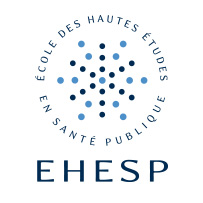Identifying return-to-work trajectories among breast cancer survivors using sequence analysis [P-281]
Résumé
Introduction: The return-to-work (RTW) process after breast cancer (BC) can be complex. Simple static measures used to assess RTW may ignore this dynamic multi-stage process that are yet important for targeting interventions aimed at reducing poor RTW outcomes.
Objectives: Our aim was to identify RTW trajectories after BC using the sequence analysis method and describe their underpinning personal, medical, psychological and occupational factors.
Methods: This study is based on the ELCCA II cohort (Angers, France) that recruited 128 women diagnosed with BC between February 2015 and April 2016. Among them, 96 were still participating at the four-year follow-up. An occupational calendar was used to assess their situation every 6 months from their diagnostic up to 4 years later. Women that did not completed their occupational calendar, that were inactive (retired, disability pension) at the time of their diagnostic were excluded leading to a final sample of 52 breast cancer survivors (BCS). Sequence analysis was used to identify RTW trajectories among BCS. Patterns of RTW trajectories were described by socio-demographic, medical,
occupational and the functional scales of the EORTC-QLQ-C30.
Results: Three types of RTW trajectories were identified among BCS by sequence analysis: long sickness absence with progressive RTW (n=18), short sickness absence and full time RTW (≤ 6 months) (n=27), short sickness absence with progressive RTW (n=18), short sickness absence and full time RTW (≤ 6 months) (n=27), short sickness absence with part-time RTW (n=7). Socio-demographic, medical and trend in functional scales during the first year after diagnosis were shown to vary according RTW
trajectories.
Conclusion: The application of sequence analysis highlights the dynamic process of RTW among BCS. It captures trajectories of multiple states and transitions that provided a holistic and diachronic approach of RTW. Three different patterns of RTW trajectories after breast cancer were identified. However, these results have to be confirmed by using a larger sample of BCS
Domaines
Santé publique et épidémiologie
Origine : Fichiers produits par l'(les) auteur(s)

